The word “drawer” followed by dados and dovetails is surly enough to scare off many a DIYer. Nonetheless, there’s an easier way to build a drawer without using a table saw or router, yet results in a beautiful, sturdy assembly just the same. Worried about visible fasteners? Our design cleverly hides them out of sight for a truly professional look. Follow along to see how you can quickly build any size drawer using this simple method.
Want to download this plan? Click to view Build a Basic DIY Drawer on ETSY
Related Tutorials: How to Install Drawer Slides & Build a Midcentury Nightstand
Cost: $6
Time: 1 ½ hours
Difficulty: Easy. Square cuts and pocket hole joinery make this a comfortable beginner project.
(1) 1 x 3 x 6 Board to make the drawer front, back and sides
(1) 1 x 6 Board to make the drawer front
(2) 3/8 x 3/8 x 3′ Square Dowel to make cleats
(1) ¼ inch Plywood to make the drawer base
(8) 1¼ inch Wood Screws to join the sides
(2) 1 inch Wood Screws to attach the drawer face
¾ inch Finish Nails to attach the cleats
Wood Glue
Wood Filler
Steps
1. Cut the Parts
Using a miter saw and the cut list above, cut the 1×6, 1×3, and square dowels to size. Mark cut lines on the face of the plywood using a framing square. Place painter’s tape over the cut lines, and then mark them again if necessary. The painter’s tape will keep the plywood from splintering during the cut. Cut along the lines using a circular saw. Lightly sand the cut edges of all the parts to remove burrs.
TIP: Check out our DIY Cutting Fence Tutorial for straighter cuts without a table saw.
 2. Drill the Pocket Holes
2. Drill the Pocket Holes
Place the 1×3 front and back pieces on the work surface. Using a Kreg Jig, drill two pocket holes in each end of both boards.

3. Drill the Drawer Face Holes
Place the 1×6 drawer face on the work surface with the pocket holes facing down. Using a tape measure and a pencil, make two marks 4 inches from the ends of the board, and centered on its width. Using a Drill/Driver, create two pilot holes. These pilot holes will later be used to attach the drawer face.

4. Add Cleats to the Front and Back Pieces
Position an 18-inch cleat on the 1×3 front and back pieces flush with their bottom edges and ends. Apply a bead of wood glue to the cleat, reposition it, and then nail it in place using a pneumatic nail gun and ¾-inch finish nails.

5. Attach Cleats to the 1×3 Side Pieces
Position the remaining cleats on the 16-inch-long sides flush with their bottom edges and centered on their lengths. This should create a 1 1/8-inch inset on each end of each cleat. Mark the ends of the cleats with a pencil. Remove the cleats, apply a bead of wood glue, and then put them back in place. Secure the cleats using a pneumatic nail gun and ¾-inch finish nails.

6. Dryfit the Sides
Set the 1×3 pieces upright so that the cleats run along their bottom edge. Apply glue to the ends of the front and back pieces and then position them between the sides, flush with their ends.

7. Assemble the Sides
In the name of not using fancy tools, I’ve used a very basic method for holding the joints square during assembly. Simply place a block (make sure it has a truly square corner) into the corner and clamp it tightly to each side. This will help hold the pieces in place while inserting and driving 1¼-inch pocket screws through the pocket holes and into the adjoining side. Once all four corners are assembled, check (and recheck) that the assembly is square by using a speed or framing square and measuring corner to corner.

8. Insert the Plywood Base
Apply a bead of wood glue to the top edge of each cleat. Position the plywood inside the frame on the cleats.
Tip: Once the drawer is painted or stained, I like to run a small bead of clear caulk along the edges of the plywood base to keep dust from falling between the plywood and the 1x3s. Additionally, if the drawer will hold heavy objects, consider using ½ inch plywood instead.

9. Attach the Drawer Face
Center the front of the drawer on the 1×6 face. Depending on your application, allow the drawer face to hang below the drawer box. Mark the placement of the drawer on the 1×6, and then remove the drawer. Apply wood glue inside the marked area, and then reposition the drawer. Using a drill/driver, drive 1 inch wood screws through the pilot holes in the drawer front and into the backside of the 1×6 drawer face.
Tip: For a perfect fit, it’s best to fully install the drawer box, and then position and attach the face.
Tip: Check out our How to Install Drawer Slides tutorial.

MORE BUILDING PLANS
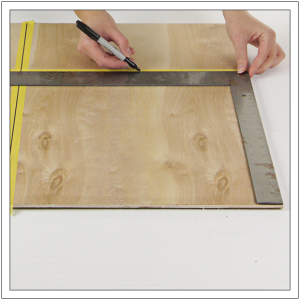
 2. Drill the Pocket Holes
2. Drill the Pocket Holes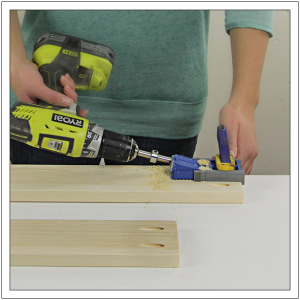
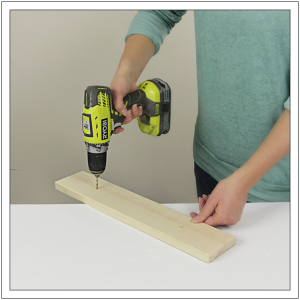
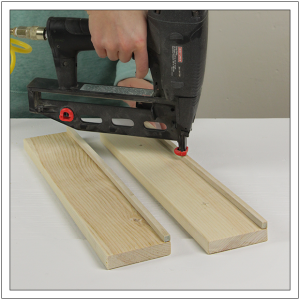
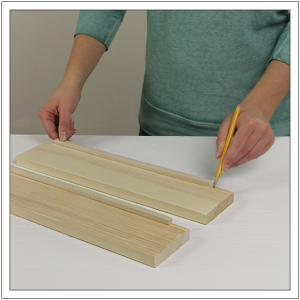



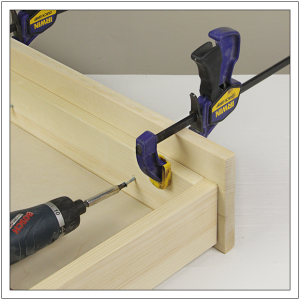






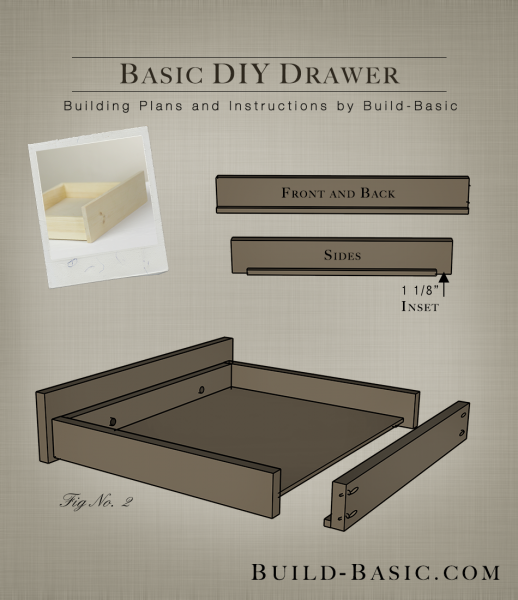


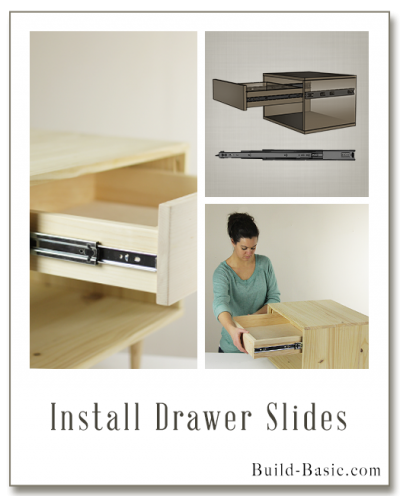

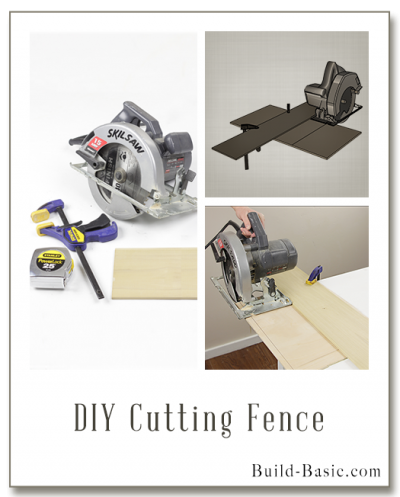






Nathan Shrock
What is the best substitute for the 3/4 in nails from that pneumatic gun? I don’t have access to a gun or air
Jenn Post author
Hi Nathan,
You can use regular nails and a hammer–just predrill a small hole first to get the nail started and avoid splitting the thin cleats. Alternatively, you could use screws, but in that case, you’d need to predrill a hole using a countersink drill bit so that the wedged head of the screw doesn’t split the cleat. Hope this helps! –Jenn
Duane
I just signed up,and would to order plans for drawer making and adding slides. How do I order?
Chad
Hello, I’ve been a General Contractor for about 17 years and the last comment from Jenn kind of confused me a little. I’ll try to explain it a little simpler. First the drawer you are building will need to be 1″ narrower in width than the inside deminsion of the piece of furniture you are building the drawer for. The 1″ difference is for your drawer guides, which are 1/2″ in width (one for each side). As far as the depth of your drawer, it is usually standard to make it 1/2″ shorter than the inside depth deminsion (front to back) of the piece of furniture you are building the drawer for so there are no clearance issues. You will get all your measurements from the inside deminsion (I.D.) of the piece of furniture you are working with. So, you will have 1/2″ shorter from front to back and 1″ shorter from side to side. I hope this helps. Jenn you are doing a fantastic job with all your posts and I have learned some neat little tricks from your posts as well. Keep up the “GREAT WORK”! I look forward to seeing more posts from you!
Anonymous
Hi,
Would you be able to provide more complete drawings that show measurements? It looks like you’ve already done some basic CAD modeling, and it would be really helpful to include more views. I also think that it would be helpful to have a diagram that shows the starting board and how the cut pieces fit into it (like, a diagram of where on the original lumber to make cuts).
I’m interested in building the 2-drawer nightstand, but am a bit confused by the measurements in this drawer tutorial. It says that the measurements are based off of the nightstand, and the sides should be of length “16 inches (1″ less than depth of cabinet box).” However, the actual cabinet from the tutorial is 17.25″. So, should the drawer be 16.25″?
Anonymous
2 1/2 inches less than the opening seems wrong to me… how wide are your drawer slides?
Jenn Post author
The Front and Back of the drawer set between the Sides, which are each 3/4″ thick. Drawer slides each generally require a 1/2 inch gap. Together 3/4″ + 3/4″ + 1/2″ + 1/2″ = 2 1/2 inches. Hope this helps! –Jenn